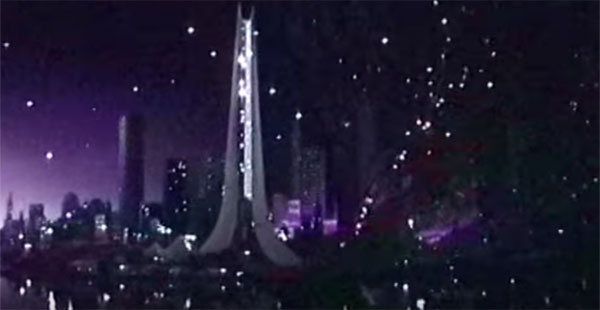
We are nearing the end of our journey through Spaceship Earth, Scene by Scene, but there’s still more to cover. The descent includes some of the biggest differences among each version, particularly with the current attraction. We have enjoyed a classic EPCOT Center song, marveled at the technology of the future, and stared at screens with our faces on them.
Your opinion of this section likely depends on when you first experienced it. After enjoying the sweet sounds of “Tomorrow’s Child” during the Walter Cronkite version, it took a while for me to warm to the 1994 update. I was excited to see the changes in 2007 and will admit the videos made me laugh at first. They don’t hold up as well on repeat visits, however.
Viewed from today’s perspective, I give a slight nod to the Jeremy Irons version as the strongest descent because of the physical sets. Losing “Tomorrow’s Child” was tough, but it’s hard to argue with the replacement. I’m hopeful that we’ll see a movement back in that direction with the impending update. There is more potential in this space than how it’s currently being used today.
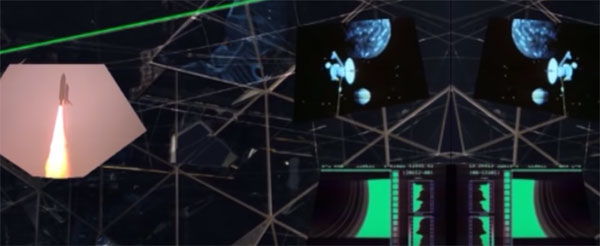
The Uncharted Seas of the Future
I’ll admit that I don’t have a great memory of the descent from the original Spaceship Earth. I experienced it once during my first trip in 1984, but my mind just recalls my later rides. Its mix of bright colors has more in common with 1970s sci-fi than subsequent versions. There aren’t great online videos of this portion out there, and what exists is quite trippy. I love the mysterious collection of video clips (including a shuttle launch, of course) that presents the excitement of what’s to come. Vic Perrin describes the potential of this future:
“Tomorrow’s world approaches, so let us listen and learn, let us explore and question and understand, let us go forth and discover the wisdom to guide great Spaceship Earth through the uncharted seas of the future. Let us dare to fulfill our destiny.”
It’s great to see Perrin’s narration (which is sedate overall) ratchet up the excitement with this conclusion. I also enjoy the idea of the “uncharted seas of the future” here. When combined with the video clips and bright colors, it conveys a feeling that anything is possible. We have accomplished so much with technology and communications, and that is just a starting point for even greater achievements.
The 1986 update includes similar colorful videos in the descent, but the entire mood changes. We now also see the silhouettes of children playing while the optimistic song plays. We don’t need to rely on the narrator to convey hope for our future world. Instead, “Tomorrow’s Child” does the heavy lifting and ensures we recognize why we’re all here in the first place. Let’s dig further into this classic tune.
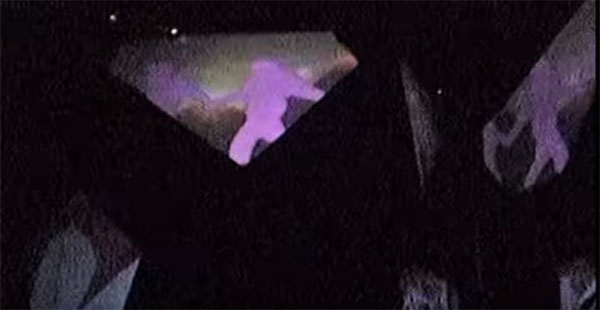
Building A World to Inspire
I could write an entire article just about “Tomorrow’s Child”, and I may do that at some point. Written by Ron Ovadia and sung by Sally Stevens, it sums up Spaceship Earth so well. For this article, I will focus on how the song presents the key messages of the 1986 version. While Perrin talked about the future, “Tomorrow’s Child” clarifies that we are not just looking to improve our tomorrow. Instead, our goals are to enhance the lives of the next generation beyond our own. This key part of the song makes that point:
“Together we’re learning to
Reach for hope and desire
Building a world to inspire
Tomorrow’s child”
What stands out is the idea that we’re building a world to inspire a child, which sums up EPCOT Center for me. Yes, it’s a theme park designed to make money for a business. On the other hand, it was created to be a place that did more than entertain. Some may call it boring, and I totally understand that point. Even so, the fact that a Disney attraction aimed so high remains important when I look back at Spaceship Earth.
Cronkite returns to remind us that our hopes and dreams were “made possible by the information age.” It’s a clear way that AT&T as the sponsor ensures we recognize how their technology leads to this promise. Cronkite explains that this tech will help us to “shape a better tomorrow”. I’m not sure that idea remains prominent today, especially given concerns with privacy and screens. Even so, the point that we’re all building something greater than ourselves sticks with me despite today’s big challenges.
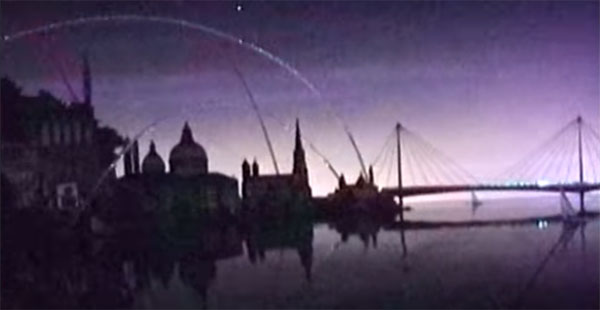
Wondrous New Tools
Despite the removal of “Tomorrow’s Child”, Disney did many things right with the descent in 1994. These scenes felt like a natural progression from the rest of the attraction. The score is still great and conveys an upbeat outlook about the future. Irons describes Spaceship Earth as our virtual classroom, and a video screen reveals students using technology for learning. This section is about a lot more than screens, however. Four small scenes appear on our right and show examples of these tools.
In a similar way to the bedroom scenes before the planetarium, the focus remains on the potential of video phones to communicate across vast distances. This makes sense with AT&T as the sponsor. Grandparents watch their granddaughter receive her doctorate, a mom sings to her baby while on a business trip, a family observes a sonogram, and an archaeologist presents his findings. These four scenes bring the technology into our daily lives and set the stage for our futures.
The final scene on our right is one of my favorites from this version. The inspiring vision of a futuristic city with its fiber-optic networks creates just the right excitement. The grand music and Irons’ narration confirm the point that our technological progress will lead to a better world. This final declaration from Irons makes sure we understand the ultimate mission statement:
“Since the dawn of recorded time, communication has revolutionized our lives and changed our world. We now have the ability and the responsibility to build new bridges of acceptance and co-operation between us; to create a better world for ourselves and our children as we continue our amazing journey aboard Spaceship Earth.”
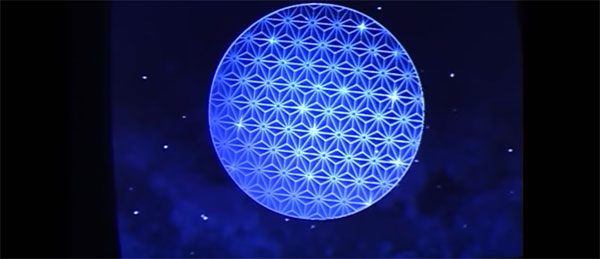
The Limits of Technology
A big selling point of the 1994 descent is its physical sets. Even when viewed today, the video phones resemble conversations through Zoom in 2020. There is a smaller chance of scenes feeling dated when they take you past a real space. It’s why the current version falls short on repeat visits, especially as technology has evolved. We spend enough time looking at screens on our tablets and phones every day. We don’t visit Disney to watch a clever video that feels a bit too much like a JibJab card.
After answering some basic either/or questions to create our future, Siemens adds some “amazing new technology we happen to know about”. After some dead time, we have some laughs watching our faces dropped into various situations. I enjoyed the device in our early visits, and my daughters get a kick out of it. This feels more like a post-show game than the finale to an iconic attraction, however. The actual tools on display rarely stick with us. It’s the laughs and silly vibe that stand out from the video.
I don’t mean to be too hard on the choice to focus on screens in Spaceship Earth. This version was installed in 2007, and a lot has changed in 13 years. There is nothing wrong with taking a light approach to the material. The challenge is looking at the potential for the descent given its use in the past. The ascent works so well in this new version, and the conclusion should try to match that quality and tone.
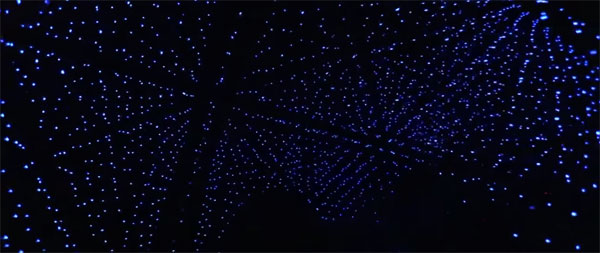
See You in the Future
We have reached the conclusion of this journey, or is it the beginning? Our time machine vehicles have returned to Earth, and it’s time to step onto the moving platform to continue our journey. Each version of Spaceship Earth has its own feeling to it, and that’s great. I hope the fifth iteration of Epcot’s signature attraction maintains a strong theme and offers a new way to experience its wonders.
This is not the end of this series, however. I’ll return one more time to sum up what it’s been like to closely explore every scene within Spaceship Earth. There is still plenty to cover in the final installment as we wait to see what Imagineering ultimately changes at some point. It will be quite an adventure!
Sources: INTERCOT, Martin’s Videos
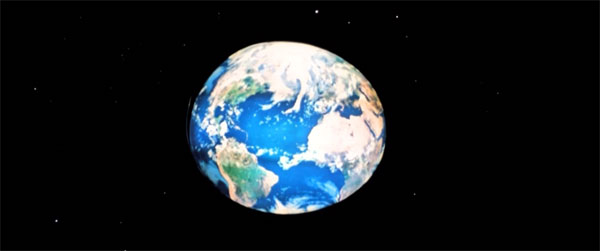



I remember “Tomorrow’s Child” very well and was very moved by it when I first heard it at age 11 or 12. The whole attraction of Spaceship Earth has never failed to inspire and motivate me to help make the world a better place. A few years ago I bought a CD of Disney parks music and was listening to it in the car. I was waiting in the parking lot of a movie theater to pick up my husband and daughter when “Tomorrow’s Child” came on. It had been a long time since I’d heard it and it made me break down in tears, all those emotions coming rushing back. I’m so glad that it’s as long as it is, and the instrumental part at the end is allowed to continue. It has this feeling of being so determined, so noble, so grand. The only other song that is on that level has to be “Golden Dream.” I too would love to see this song come back and inspire a new generation. Looking forward to your commentary on this song, Dan!
Thanks Melanie! I’m right with you on Tomorrow’s Child. The more that I think about it, that song perfectly summarizes how I feel about the original EPCOT Center and Spaceship Earth in particular. The instrumental part at the end just fits the attraction so well, especially the descent of the Cronkite version. I’d love to see it come back to the attraction with the update.
I remember my Grandmother singing along to it on the decent. It’s one of my favorite memories of her. I so wish they’d bring it back somehow even if just instrumental.
Me too! I know the updates have been put on hold for a while, but I feel like there would be a way to include it when Disney decides to make changes for the next version. It’s such a great song and fits in the attraction so well.
Great article, Dan; always nice to hear the nostalgia around the original song, “Tomorrow’s Child.” While your appreciation for this song is most welcome, it would have been nice, as the writer of the music and lyric, to at least get a nod—especially when you cite lines verbatim: “Together we’re learning to, reach for hope and desire, building a world to inspire… Tomorrow’s child.” Just the same, I am grateful to know that people enjoyed and remember this song, which was one of the first songs I wrote that was produced—a song I was so proud to have included in a ride such as Spaceship Earth (the narration for which I also wrote).
Hi Ron. That’s great that you enjoyed the article! I apologize for the oversight in not referencing your work; I’ve updated the article to mention you and the singer (Sally Stevens) of “Tomorrow’s Child”. It definitely wasn’t intentional not to cite your role as the writer. The song has really stuck with me over the years, which is saying a lot since it was sadly removed 27 years ago. Amazing job on such a classic song. Thanks for the comment!
Hi Dan,
Thanks for updating the article and, again, for your kind words. Yes, it is sad that they removed “Tomorrow’s Child” many years ago, though I have always loved the work of Bruce Broughton, and if his music is in there now, I am sure the ride is just fine. Take care!
Thanks Ron. Bruce Broughton’s music is still in the attraction, and he did a great job on the score for the latest version of Spaceship Earth. It still has the spirit of the earlier version with Tomorrow’s Child. Cheers!